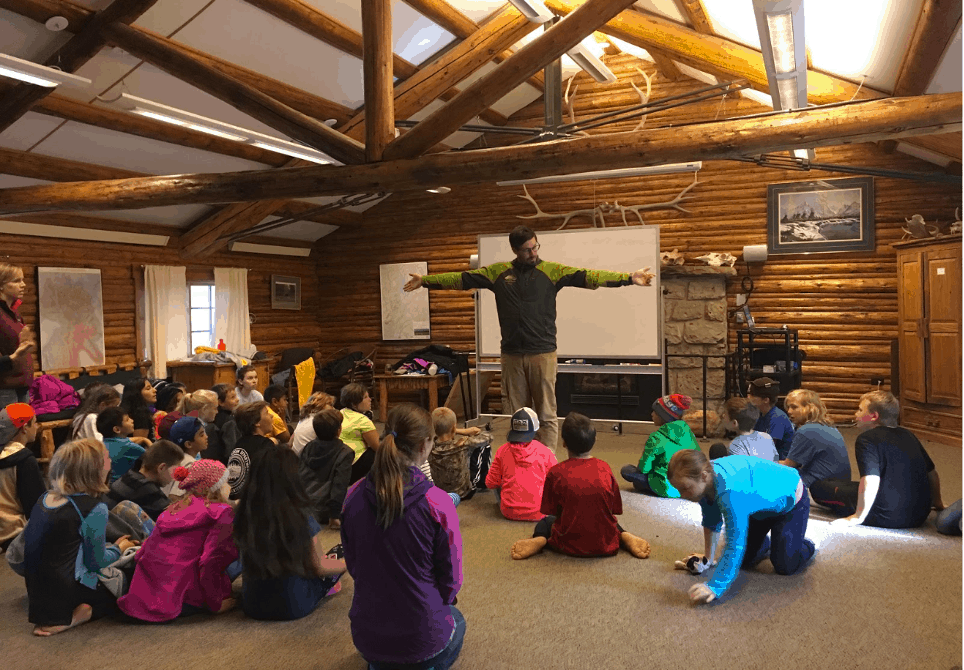5 Levels of Place-Based Learning Implementation

By Nate McClennen
Based on the history of place-based education, implementation of this approach has cycled over the generations as schools connected and distanced curriculum from communities.
As we approach the era of next-gen learning and the possibility of place-based learning at the center, it is important to consider the continuum of place-based implementation to provide teachers and schools with accessible entry points. Without these entry points, teachers may find implementation difficult due to not knowing where to start.
The first dichotomy in implementation is the notion of “formal” vs. “informal” education. The vast majority of programs that could be considered place-based are offered in the “informal” world of after-school or summer. These include the rich experiences found from summer camps, science center programs focused on local ecology, internships in local businesses, service learning programs and community art projects. These are important examples for teachers to see as existing models of successful place-based education.
These are important examples for teachers to see as existing models of successful place-based education. However, too frequently these experiences are considered “add-ons,” “supplemental” or “enrichment.” Teachers need to have the tools, time and resources to understand how the approach used by these informal education organizations can happen during the school day in K-12 classrooms.
Five Levels of Place-Based Learning
In the K-12 sector during the school day, we see a continuum that describes the increasing level of time and commitment on the part of the teachers and learners. The following five levels to help guide and characterize the implementation. While they are described as a continuum, they blend and integrate based on curriculum needs.
Level 1: Classroom Visitor
As a teacher begins to consider how to pivot curriculum and instruction into a place-based approach, the easiest access point is to invite a community member into the classroom. For example, a teacher might ask a local politician to talk about the democratic process. Crellin Elementary School has set up a community partner system to achieve this level of place-based implementation.
Level 2: Field Trip and Service Learning
Along with bringing visitors into the classroom, schools and teachers have implemented field trips and service learning programs for as long as schools have existed. Well-implemented, they can increase student engagement and curricular context. Poorly-implemented, and students will remember the long school bus ride and fooling around outside the classroom.
The keys are planning, integration, safety and follow-up. Given the ubiquity of the concept, great articles exist to guide teachers into the completion of a successful field trip, and successful partner programs such as the National Park Service’s Every Kid in the Parks program can provide staff and resources to support great outcomes.
Level 3: Context Curriculum
Despite the constraints of budget and transportation, teachers can still conduct local inquiries into questions that are relevant to the community while not leaving the classroom. This might include writing a local newspaper, creating virtual tours or completing a geo-referenced community history project.
Level 4: Impact Investigation
Once students are ready to leave the classroom beyond the structured field trip, the level of student agency can increase. Students and/or teachers can lead an inquiry into a local topic to practice research and contribute to the local base of knowledge. For example, students participate in a study of the local stream to understand the quality of the water as part of a national Stream Team program. Beyond the inquiry, students can explore the design thinking process by identifying and creating solutions to local challenges.
Level 5: Inside-Out School
The final implementation level is where the community becomes the school. A school might transform an entire curriculum where the learning outcomes are the same but they are accomplished by the students doing real work to make the community better (as in this student-run business in Casper, NE).
In the younger years, the advent of nature-based PK-5 programs shows how the environment itself can be the school. Entire programs exist that use local places as the foundational context for learning. Excellent examples include Maine Coast Semester, City-as-School and School without Walls. With the advent of next-gen tools, competency-based approaches and project-based learning, the inside-out school model is now a reality and the ultimate manifestation of place-based education.
From Teacher-Centered to Learner-Centered
Parallel to these levels exists an additional continuum that ranges from completely teacher-centered to completely learner-centered. Described as prescribed vs. emergent curriculum in some arenas, place-based education is a learner-centered approach where students identify and take ownership over community challenges.
We see some schools doing this well such as components of the High Tech High network (a leading project-base learning school network), Chavez Schools (which focus on policy and social justice) and Teton Science Schools (place-based inquiry and design). However, learner-centered is not a required component of place-based education–just perhaps an aspirational outcome.
All teachers have the capacity to teach using a place-based approach. Through the levels described above and the connected examples, teachers can imagine how they can transform the curriculum to not only teach the requisite knowledge, but also the skills and dispositions to impact local communities.
This blog is part of our “Place-Based Education” blog series. To learn more and contribute a guest post for the series, check out the PBE campaign page. Join in the conversation on social media using #PlaceBasedEd. For more on Place-Based Education, see:
- The Past, Present and Future of Place-Based Learning
- PhotoBlog | Teton Science Schools & The Power of Place-Based Learning
- Expanding & Enriching Relationships in Place-Based Education
- 20 Schools and Networks That Educate With A Sense of Place
- Place-Based Education: Communities as Learning Environments
Nate McClennen is the Vice President for Education and Innovation at Teton Science Schools. Follow TSS on Twitter: @tetonscience
Stay in-the-know with all things EdTech and innovations in learning by signing up to receive the weekly Smart Update.






0 Comments
Leave a Comment
Your email address will not be published. All fields are required.